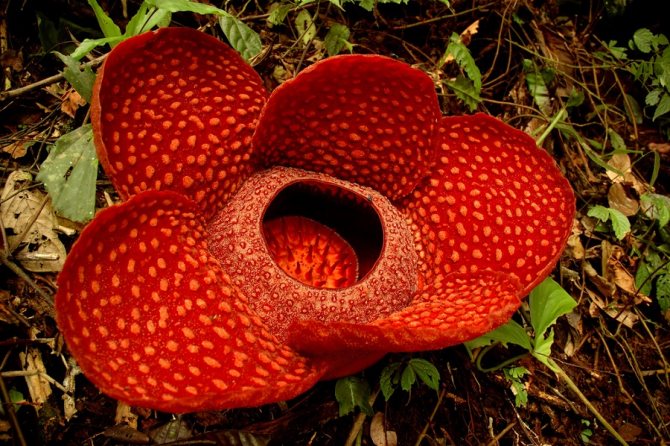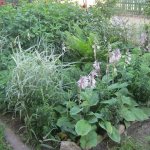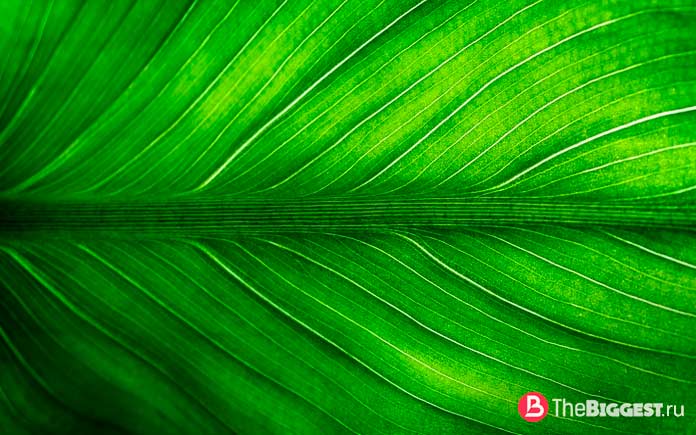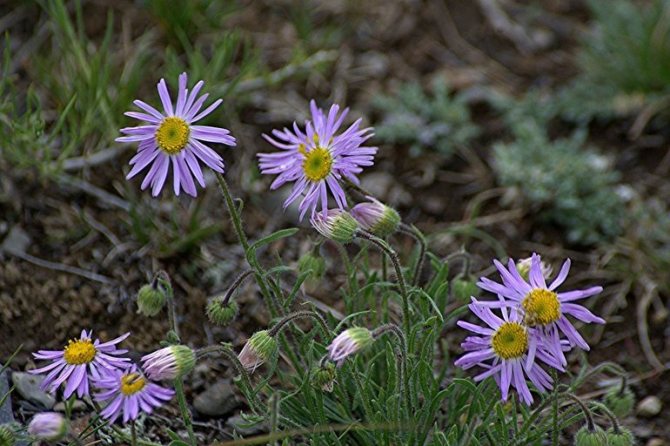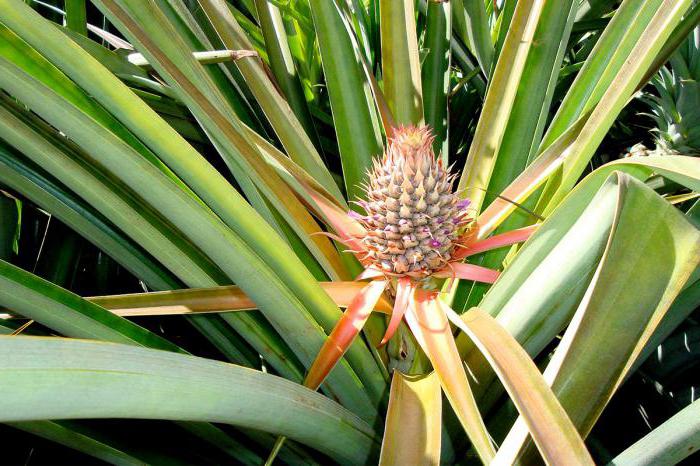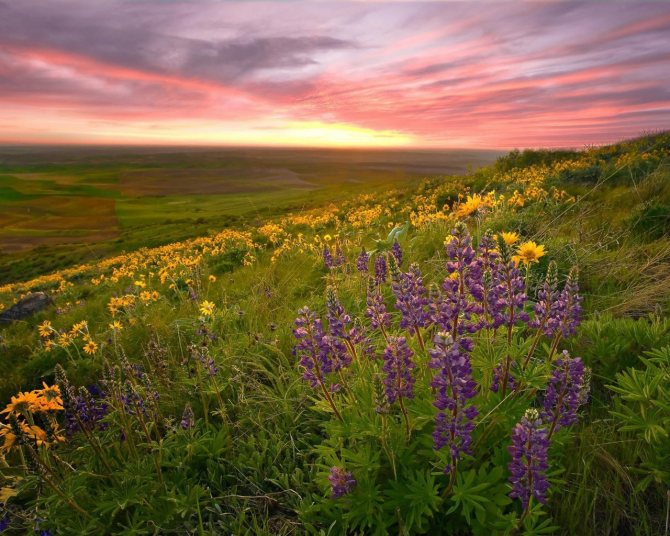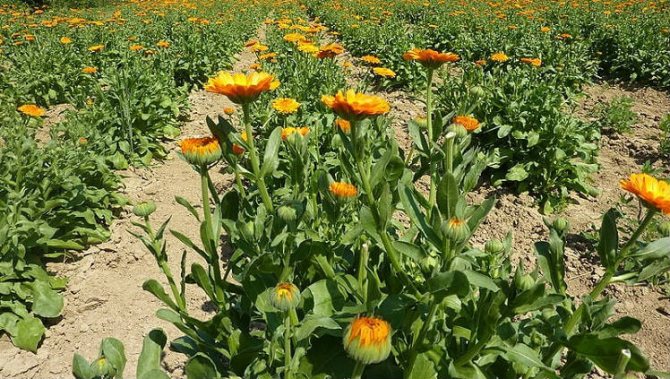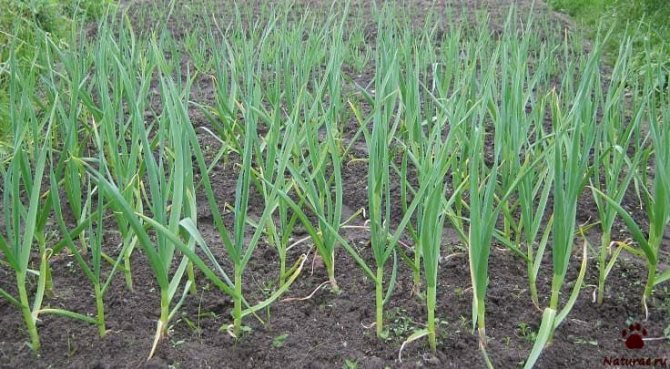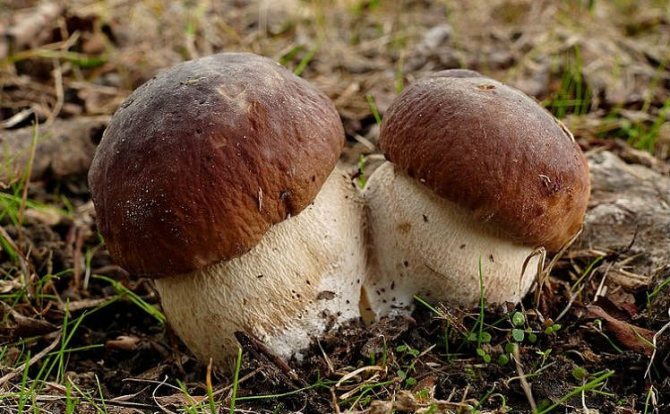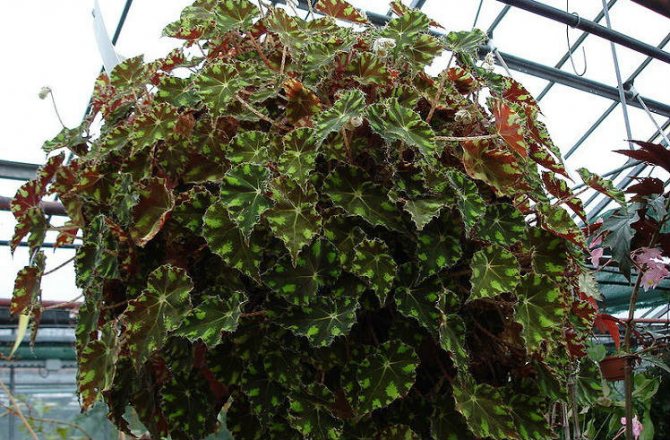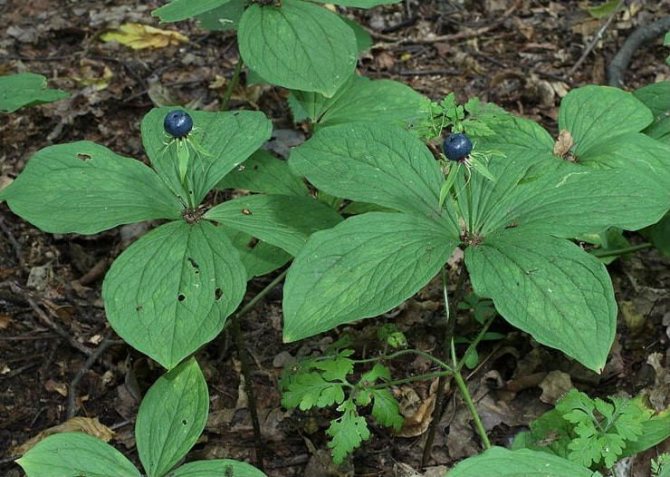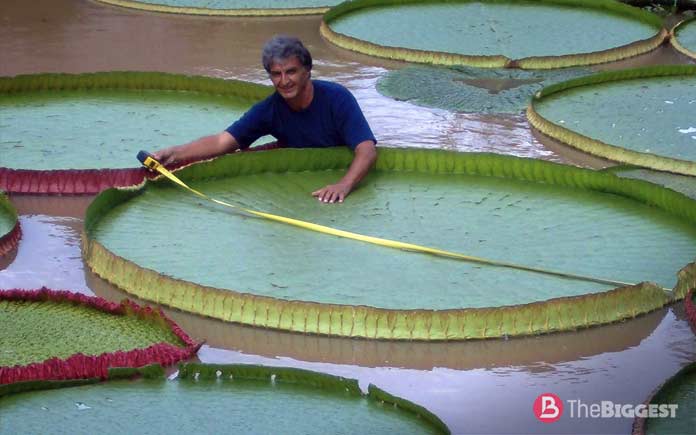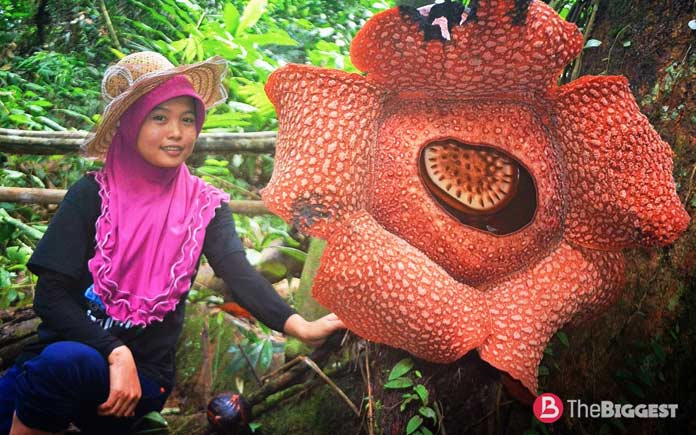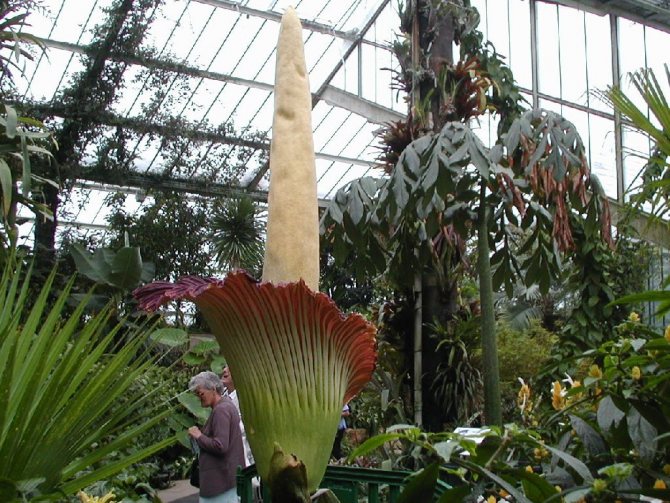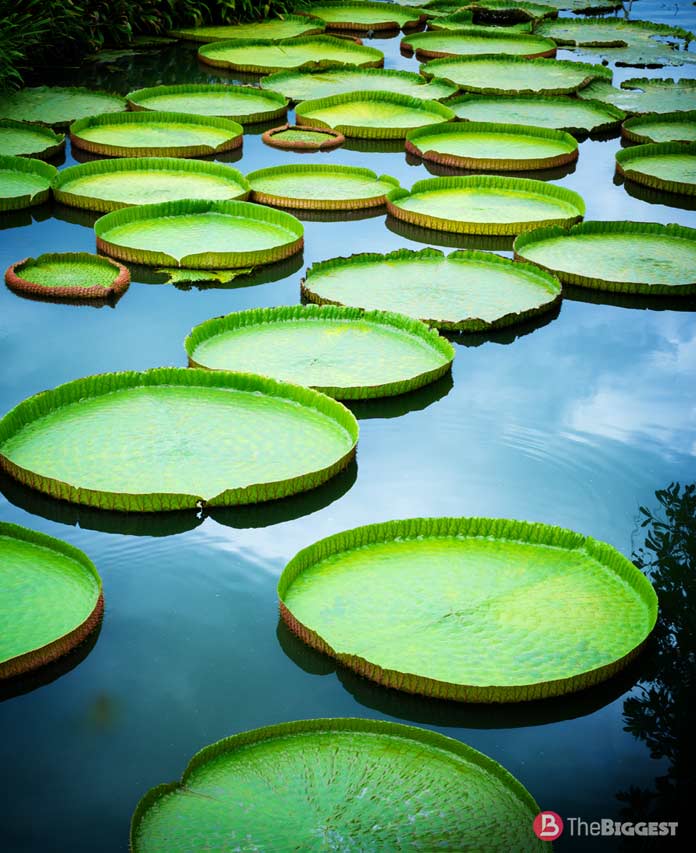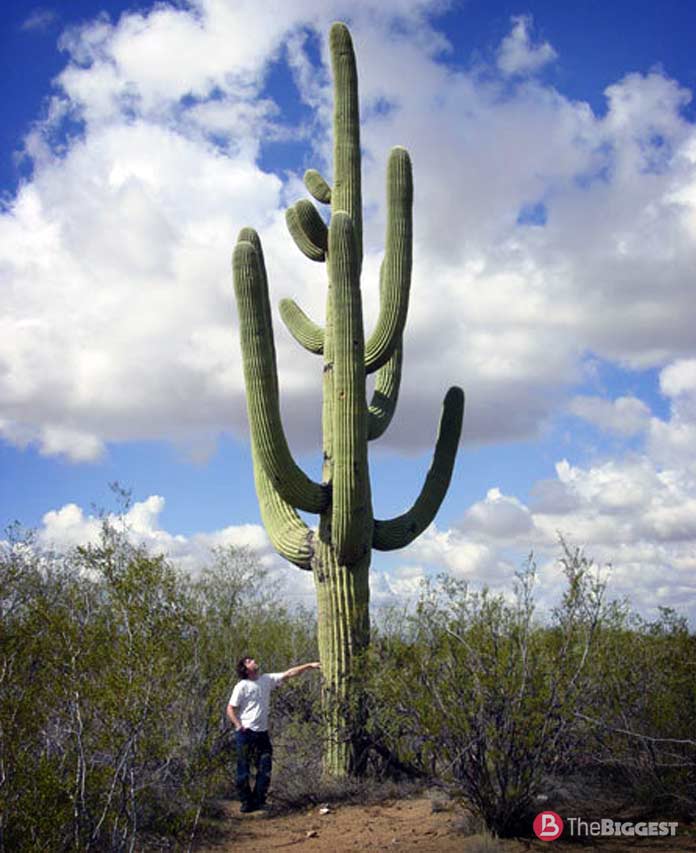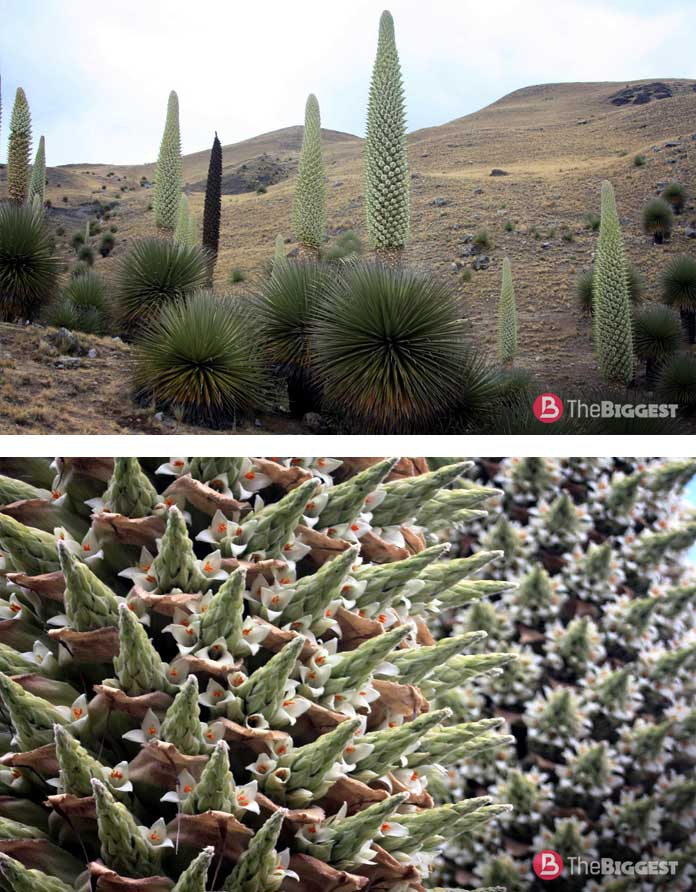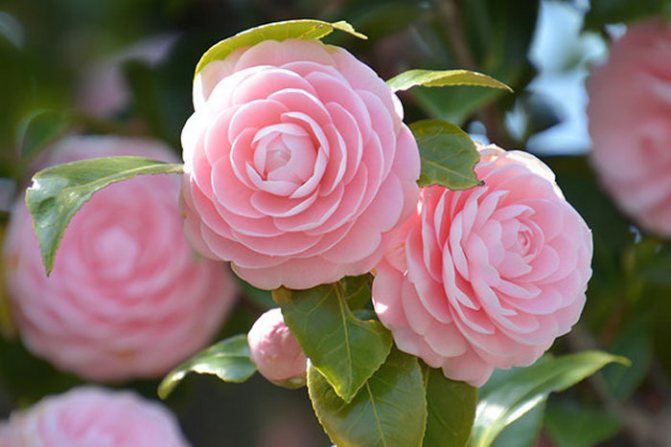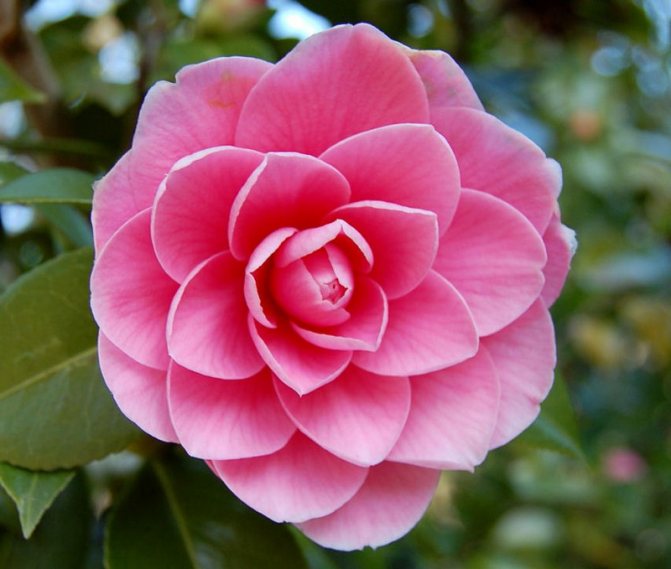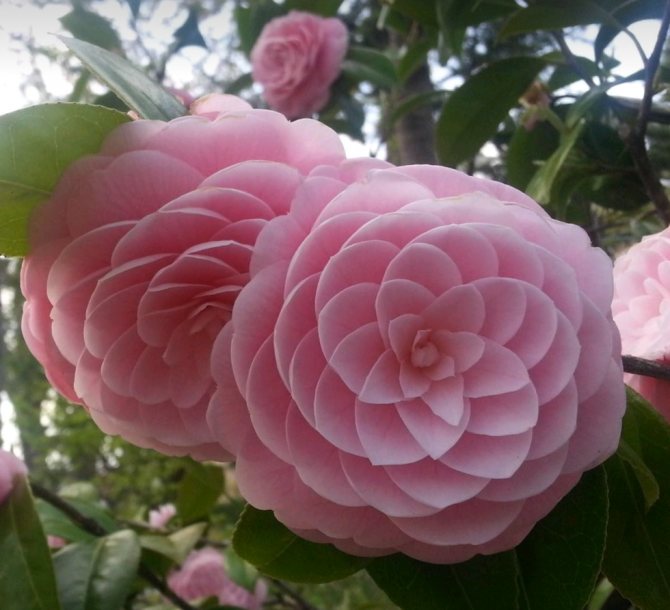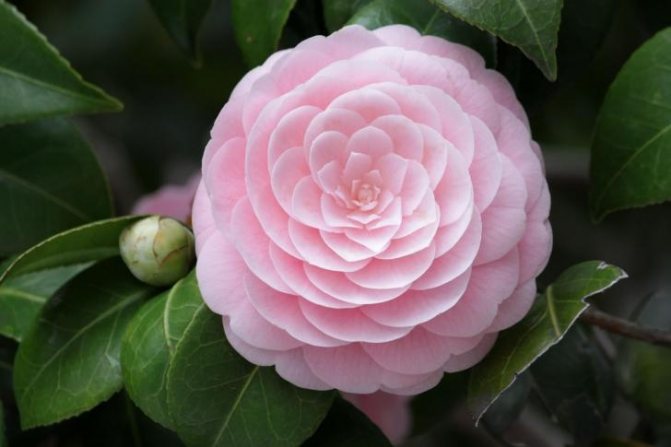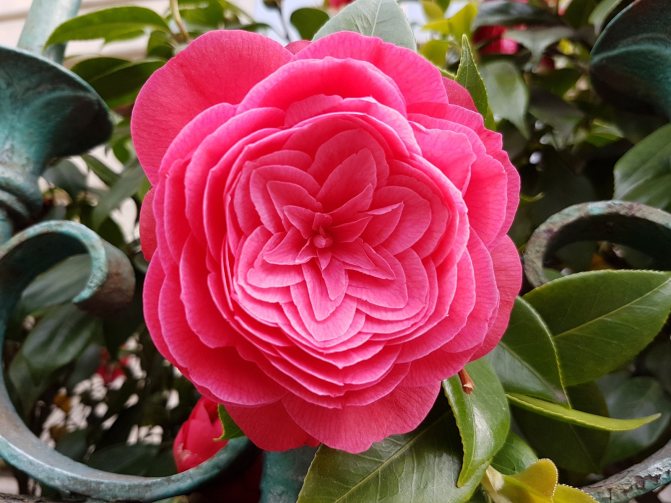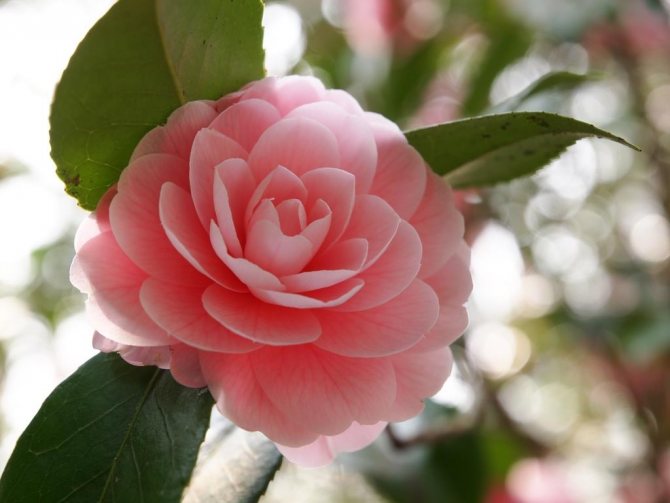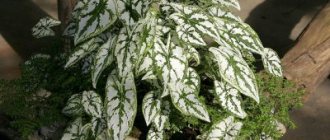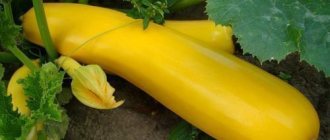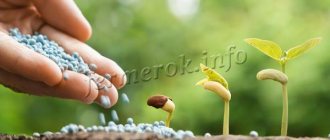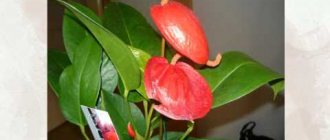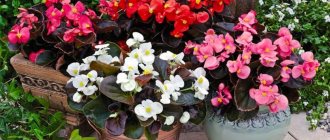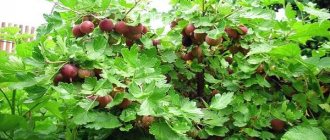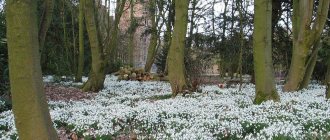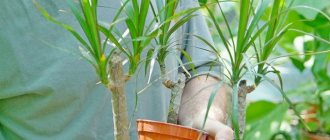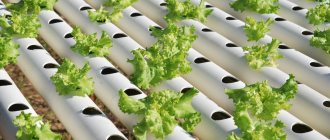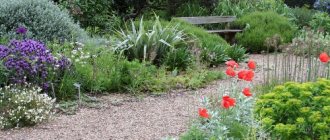Vegetable world our planet is a huge kingdom of living organisms. Yes, that's right, plants are living organisms, unable to move. And in our world there are about 325 thousand species of them. Although it is not possible to count reliably the number of species. In various sources, their number ranges from 300 to 350 thousand, we only took the average value. Counting their number is further complicated by the fact that every day some species of plants die (several dozen per day), and new species are discovered.
Main plant groups
The above division of plants into groups is due to the peculiarities of the habitat, structure, methods of reproduction. Each of the groups discussed below has plant species that are also represented.
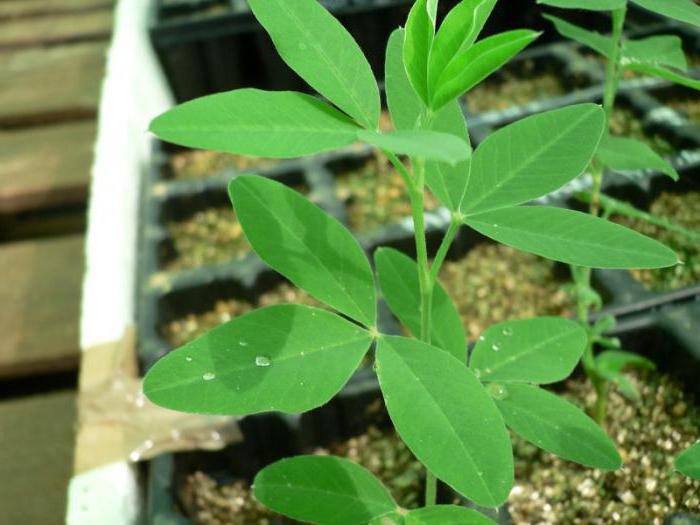
Algae are organisms that do not have roots, leaves, stems. Their main habitat is water. The total number of algae species is within 35 thousand. Some types of algae:
- marine macrophytes: Canadian Elodea, American Wallisseria;
- green algae: chlamydomonas, chlorella, microsterias, caulerpa, cladofora;
- flagellate algae: green euglena, phacus, nightlight, Norwegian dinophysis, peridinella, small propocentrum;
- red algae: Irish moss, prickly endocladia, lanceolate porphyry, gigartina, phyllophora, polinevra;
- brown algae: fucus, palm-shaped postelsia, macrocystis, sargassum, kelp, cystoseira.
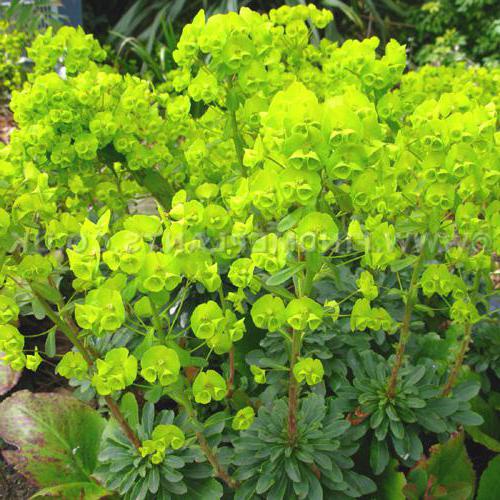

Mosses are plants that have stems and leaves but no roots. Their reproduction is carried out through spores. Mosses grow in shaded areas, near water, sometimes in water. In total, there are more than 5,000 plants of this kind.
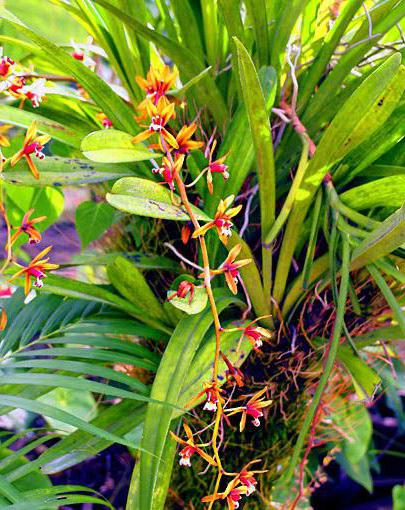

Ferns are plants that have a root, stem, and leaves. They grow in shaded areas with high moisture levels. Reproduction - by spores. The total number of fern species is nine thousand. Here are some of the names of fern species: common ostrich, sensitive onoklea, royal osmunda, swimming salvinia, caroline azolla, female cochinate, male fern, northern kostenets, pharmacy skrebnik, common bracken.
Conifers. Plants growing in forests, having a root, stem. A feature of conifers is the presence of needles. In total, there are 600 species of conifers. Let's name some: pine, spruce, fir, cedar, juniper, thuja, yew.
Flowering. Plants that have a root, stem, leaf, flower and fruit. These include trees, shrubs and grasses. Taking into account the variety of flowering plants, the number of species exceeds 350 thousand names. Here are some of them: poplar, acacia, peony, rose, dandelion, hawthorn, jasmine, quince, weigela, hibicus, creeping wheatgrass, awnless fire, timothy, foxtail, pike, whitebush, wheat, millet, corn, henbane, dope.
Classification of herbs [edit | edit code]
Herbaceous plants, in turn, are subdivided into many other groups (there are different classifications). The most common consideration among them is the following groups:
Annual grasses (one-season), completely dying off after vegetation and fruiting. Their renewal is carried out by seeds. For example, these are the types: white gauze ( Chenopodium album
), dill (
Anethum graveolens
), camelina (
Camelina sativa
), wild radish (
Raphanus raphanistrum
) other.
Perennial grasses have longer lifespan underground organs with buds of renewal. Underground organs are represented by various modifications of the root or shoot (rhizomes, bulbs, tubers, etc.).
Perennial grasses according to their early maturity (duration of the growing season), in turn, are divided into four groups: super-early, early, medium and late.
Types of plants. List in Russia
For each area, certain types of plants are characteristic, a list of which we will also give. Climatic conditions, soil cover, historical features, human activities are factors that affect the uniqueness of the flora of the natural range. All these factors need to be considered together.
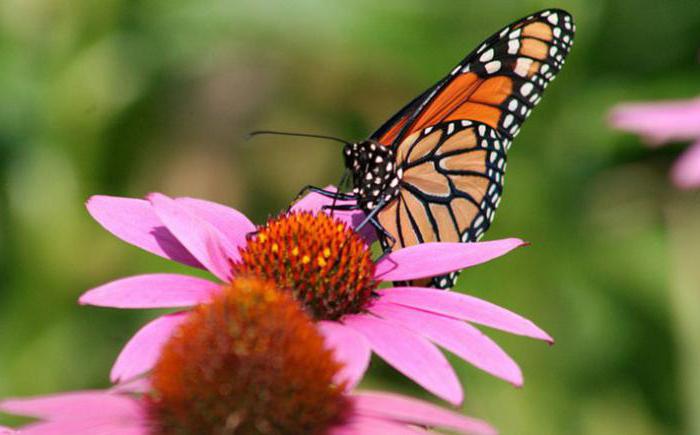

Consider the species diversity of the flora of the Russian Federation. Given the vastness of the territory, several types of plant zones in Russia can be distinguished, each of which is characterized by certain types of plants. The list (3rd grade general education) can also be found in the botany textbook.
The main types of flora in Russia include:
- tundra type, the main representatives of the flora of which are green mosses, lichen, lingonberry, crowberry, partridge grass, cassiopeia, dwarf birch, polar willows, polar poppy, arctic bluegrass;
- forest type, which is represented by spruce, fir, cedar, pine, birch, oak, maple;
- steppe type, which is characterized by the growth of herbaceous vegetation;
- desert type, the representatives of the vegetation of which are wormwood and hodgepodge;
- meadow type, the vegetation of which is represented by herbaceous perennials: creeping buttercup, field mint, wild bent, meadow foxtail, creeping wheatgrass, dandelion, toadflax, korostavnik.
- swamp type, which is characterized by moisture-loving plants.
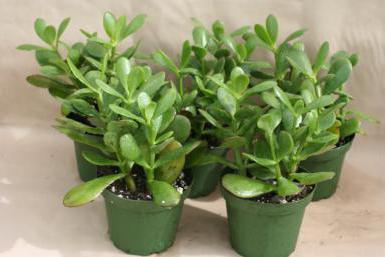

The vegetative "palette" of Russia, as we see, is very wide. Geographically, plant species, the list of which is initially significant, in quantitative terms increase from north to south, however, in deserts they decrease somewhat due to the dryness of the climate, and increase from plains to mountains.
The size of the herbs [edit | edit code]
The height of the grasses is from a few millimeters to several meters.
In the Sikhote-Alin mountains, the grass often reaches a height of 3–3.5 m. There are also special cases of gigantism of grasses in the Sayan Mountains (Krasnoyarsk Territory). In the dark zone of the Western Sayan, the average size of grasses is usually more than 2 m.There are also separate records: larkspur is high ( Delphinium elatum
) with a stem size of about 4.5 m; narrow-leaved fireweed (
Chamerion angustifolium
) - 2.92 m; hellebore Lobel (
Veratrum lobelianum
) - 2.86 m; wormwood annual (
Artemisia annua
) (Krasnoyarsk, 2005) - 3.22 m; white Mary (Krasnoyarsk, 2005) - 2.02 m.
Many representatives of the umbrella ( Apiaceae
), cereals (
Poaceae
), Astrov (
Asteraceae
).
Some herbaceous plants grow quite large, for example, plants of the genus Musa
, to which different types of bananas belong. Banana is the tallest and most powerful herb, reaching 15 meters in height, often mistaken for a tree. However, its powerful stem is not a trunk. According to other sources (if the degree of lignification is not considered a key feature), some bamboos are the tallest grasses. Their stem - straw - can reach a height of 35 meters.
Vegetation cultivation
Since ancient times, the flora of the Earth has developed without direct human intervention, respectively, all flowers and herbs were wild-growing. Human development led to the emergence of his need for cultivating the land and growing plants for his own needs. Under the influence of human labor, plants were modified, received new characteristics.Thus, cultivated plants arose, which from Latin means "cultivated", "processed" plants grown for food, medicine, feed for livestock, etc. The main distinguishing feature of cultivated plants is that they are grown regardless of the place of origin and are not able to reproduce on their own.
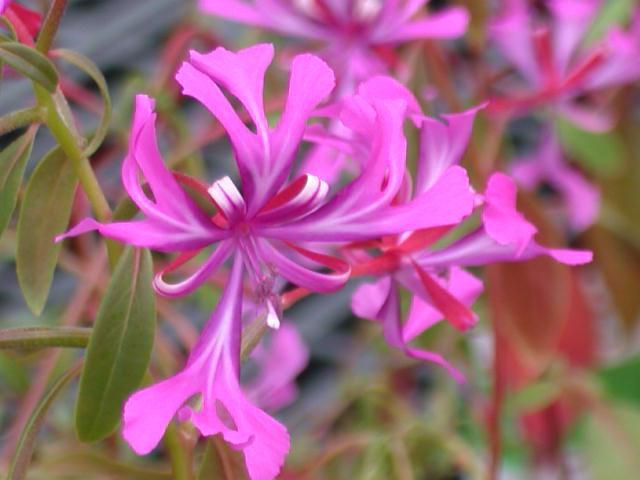

Today, many crops are obtained from the wild through selection or genetic engineering. Cultural flowers and trees are subdivided into grain, spinning, vegetable, fruit, and decorative. Consider cultivated plants, a list of species.
- Cereals - plantations, the main product of which is grain used as food, raw materials for industry, animal feed. The main types of grain crops are wheat, rye, barley, oats, rice, millet, sorghum, buckwheat.
- Spinning plantings are those from which fiber is made for the textile industry. The main types of spinning plants: flax, fiber, cotton, jute, hemp, kakpok, kenaf, crotalaria, sisal, furkreya.
- Vegetable plants are planted for fruit production. The main representatives: tomato, pepper, eggplant, physalis, cabbage, kohlrabi, watercress, radish, pumpkin, watermelon, melon, cucumber, carrots, beets, celery, asparagus, onions, garlic.
- Fruit Plants - Plants that bear fruit. These include: orange, lemon, grapefruit, banana, avocado, mango, pomegranate, grape, almond, coconut, olive, strawberry, gooseberry, currant.
- Ornamental plants - plants used for decoration and decoration of premises, places of rest for a person. The types of ornamental plants are: acacia, barberry, magnolia, lilac, thuja, boxwood, juniper, rose, peony, carnation.
Ornamental plant species are the most attractive. The list, photo examples can be seen in the school textbook. This also includes home flowers.
Plant species (list of indoor indoor plants) includes tree species. The main subspecies of ornamental plantings will be described below.
Benefit for health
Many wild plants simultaneously possess not only decorative and nutritional value, but also medicinal properties, known since the times of Ancient Rus. Naturally grown grasses and shrubs are free of nitrates and pesticides, which are oversaturated in greenhouses and fields.
Modern research has shown that in many cases, the collection of medicinal herbs can replace pharmaceutical preparations. An example of wild plants with medicinal properties are the species that are common in every region and are familiar from childhood:
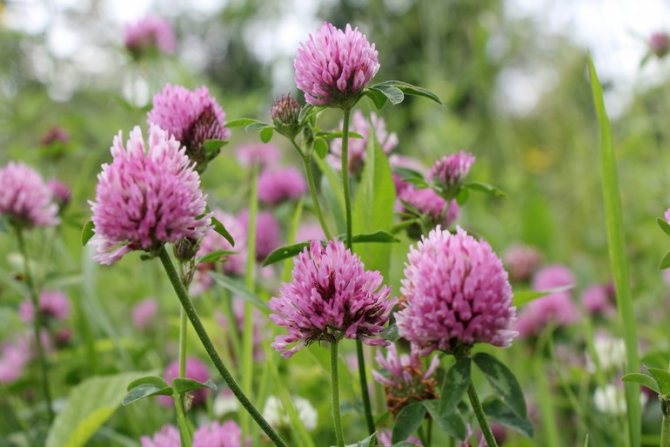

- Meadow clover, flowers and top leaves of which are used for malaria, headaches and asthma attacks.
- A decoction of burdock roots helps with diseases of the gastrointestinal tract, and fresh leaves are applied to wounds and burns to prevent infections.
- Low-growing bushes of acid wood are easy to find in shady places near the banks of rivers and lakes. An infusion of its leaves is used to treat kidney diseases, heartburn and metabolic disorders.
- Lingonberry leaves and berries have strong disinfecting properties. Broths and tea are used for vitamin deficiencies, fever, and mineral metabolism disorders.
- A variety of the Astrov family, chamomile is found in well-lit meadows and hills. Young inflorescences of this familiar plant are used to normalize blood pressure, improve metabolic processes and relieve inflammation. Tea helps with insomnia, depression, strengthens the nervous system.
The use of medicinal plants, like other drugs, is not always useful, each has contraindications. It is advisable to consult a doctor who will select the correct regimen based on the characteristics of the body and its condition.
Herbaceous crops: description, varieties
Herbaceous plants have a soft above-ground stem and tolerate cold for a year or several years in a row. The structure is different:
Among the vegetation, there are both dwarf and giant species: duckweed - from 4 to 15 mm and bamboo, reaching 35 m.
Depending on the lifespan, the types of herbs are divided into:
Annuals crops grow, bloom, ripen and die off during one growing season. The breeding method is seed. TO herbal representatives of this group include:
- chamomile;
- dill;
- peas.
In biennial plants, flowering does not occur in the first year of development. Roots, leaves and stem are being improved. This class includes:
The lifespan of perennial crops is more than 2 years. Perennials are endowed with a root system with renewal buds in the form of a tuber, bulb or shoots. They are subdivided into early and ultra-early, middle and late. They include:
Herbaceous annuals are planted in the spring in the soil by seedling or seed method. Heat-loving grasses are planted when the threat of spring frosts has passed.
Most annual grasses tolerate replanting with the arrival of the summer season and at the budding stage.
Perennials are propagated by plots on a permanent bed in spring or early autumn. A crop that blooms in the spring season requires replanting in the fall. Grass transplanting is accompanied by a period of rest and adaptation and requires special care. For annual grasses, the period is 7-14 days, for perennial crops - 1 or 2 growing seasons.
Welwitschia mirabilis
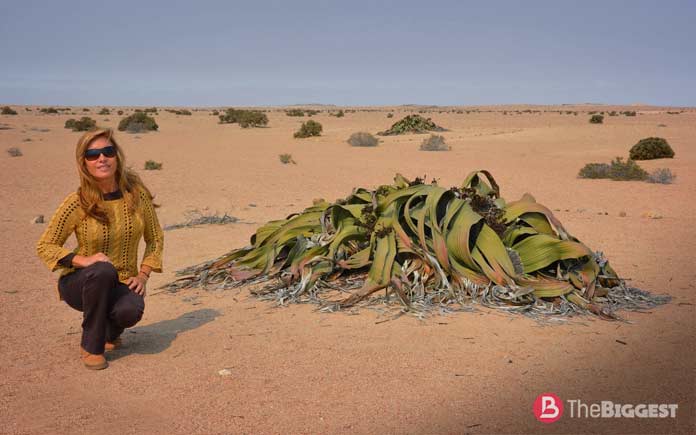

A relict and unique plant named after the Australian traveler and botanist Friedrich Welwich, it grows in the rocky Namib Desert.
Velvichia is a two-leaved plant. Natural conditions also determined the size of the leaves, their length reaches 8 meters, and the width is 1.8 meters.
The Bushmen tribes living along the west coast of Africa respectfully call the plant "Big Master".
Reasons for the appearance of hazardous substances
Where do harmful toxins and hazardous substances come from in our homes? Firstly, these are the products of combustion of gas stoves, on which we cook our food. Secondly, these are all kinds of building and finishing materials - plates on synthetic resins, linoleums, polymer wallpapers, plastic panels and others that emit hazardous substances into the air of the room. Even natural materials begin to deteriorate during the aging process and become hazardous to human health. Televisions, computers, microwave ovens, smartphones reduce the amount of negative air ions useful for the human body.
The most poisonous flower is Dzungarian aconite
This plant is so poisonous that it was previously used to kill giants - blue whales.
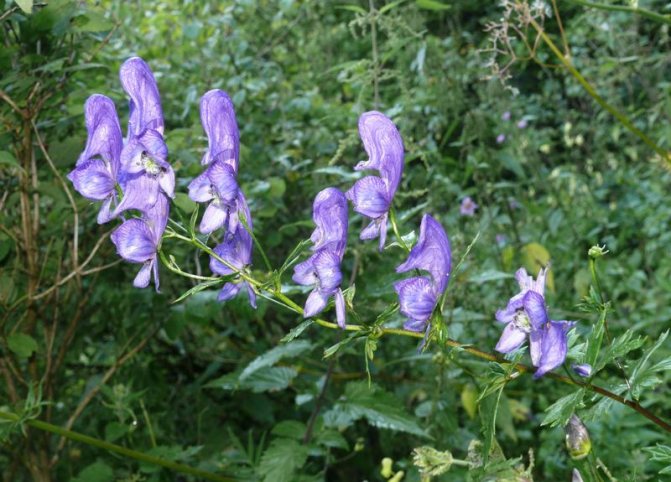

It is quite beautiful: the flowers are pale blue, neatly shaped. But behind this beauty is a deadly poison.
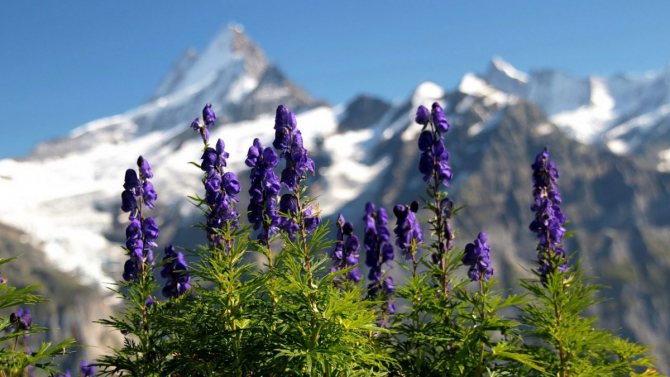

Although the roots are the most toxic in a plant, flowers are still recognized as the most poisonous on the planet.
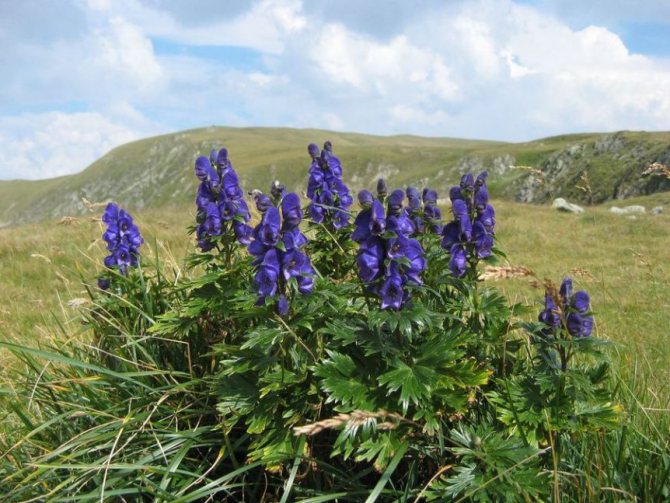

Content
- 1. Globular plants
- 2. Rosette plants 2.1. Flat rosette plants
- 2.2. Succulent rosette plants
- 2.3. Funnel-shaped rosette plants
The flora world is quite diverse. Every year, more and more exotic plants appear in culture - most of them come from the tropics and subtropics. Often, the motley abundance of beautifully flowering and decorative leafy indoor species takes florists (and not only beginners) by surprise: which representative of the flora should be preferred? I would like to purchase a compact flowering cactus,and at the same time, you cannot take your eyes off the gorgeous Monstera with decorative dissected leaves.
Before purchasing a plant you like, you need to have at least the slightest idea about it and the necessary basic knowledge of care.
First you need to decide where the plant will be placed. If the room is small and, moreover, cluttered with furniture, then a tall spreading palm tree will not fit into its interior. And, conversely: in a spacious room against the wall, a low-growing view is considered inappropriate. It is also important to know how close the cultivation conditions of a certain species in a dwelling will be to the growing conditions in the natural environment. Light-loving representatives of the flora are unsuitable for growing in the northern exposure, and people from the humid tropics will not tolerate dry apartment air without additional humidification. After all, the main task of the florist is to grow a healthy plant in all its glory, which will delight the eye for many years.
So, all indoor plants are usually divided according to their appearance into six categories.
Facts from history
Plants are a biological kingdom that consists of multicellular living organisms. Despite the lack of the ability to move, representatives of the species are active. Various chemical processes take place inside the leaves, stems and roots that ensure the normal functioning of the entire system.


The first description of the diversity of the plant kingdom belongs to the ancient philosopher and scientist Aristotle. He did not give an exact definition, name, characteristics of families or subkingdoms, but put plants between representatives of the animal world and inanimate objects, since they are not able to move.
After a while, scientists identified a separate kingdom of fungi, and plants became a separate species, which is still being studied today. In addition, experts have identified some varieties of algae that do not have a root system, like other representatives of the plant world.
Amorphophallus titanum (Amorphophallus titanum)
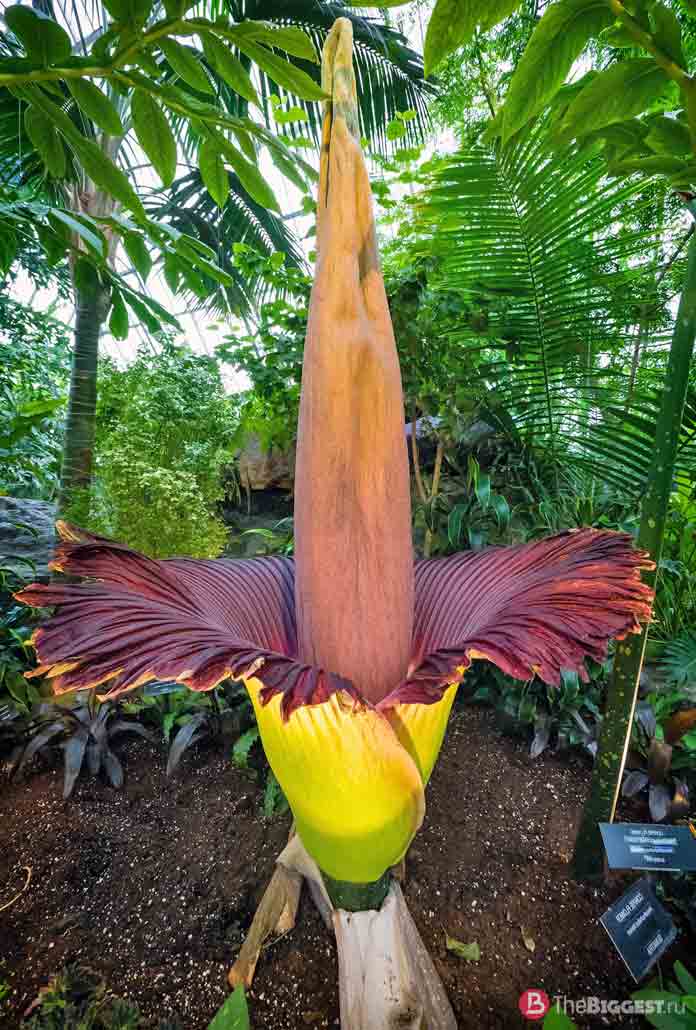

A large and rare tropical plant Amorphophallus titanic during flowering gives off an unpleasant smell of rotten meat.
In nature, the plant with the largest inflorescence is almost destroyed in nature, and now it can be found only in greenhouse conditions.
Thousands of nature lovers come to see the flowering of this unique plant. And even an unpleasant smell does not stop true admirers of natural beauty.
Umbelliferous corypha - the largest inflorescence
This plant has the largest inflorescence, located at the top of the palm tree. And it is not surprising - in his entire life, the luminary blooms only once and after that dies.
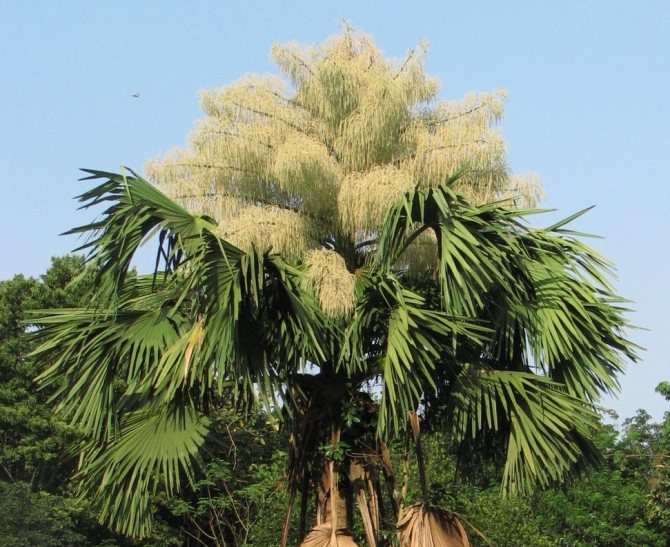

This fan palm is considered one of the largest in the world.
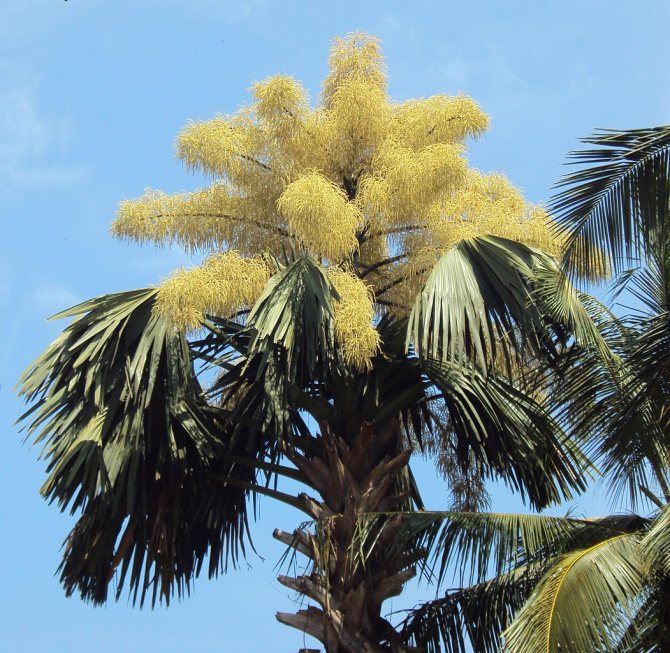

After flowering, fruits develop, of which there can be up to several thousand on one tree. They are quite small - 3-4 cm in diameter.
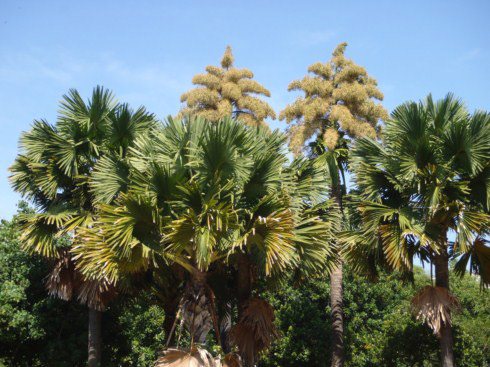

Cylindropuntia bigelovii
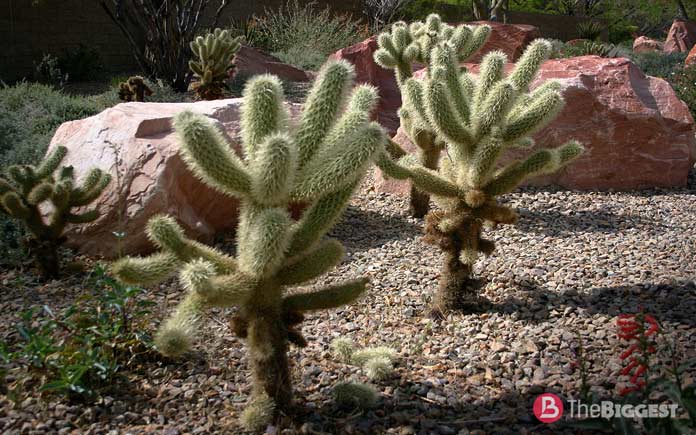

The plant, formerly known as "Opuntia Bigelow", grows on the rocky slopes and deserts of Mexico and the southwestern United States.
In height Bigulou reaches 1.5-2.8 meters. Large thorns are densely located over the entire surface of the plant. Cylindropuntia Bigelow blooms from February to May. The flowers are light green with purple veins.
Like other cactus plants, birds nest on this plant, and hamsters arrange dwellings so that the thorns of the cactus protect them from enemies.
Features
The study of the main features of the representatives of this kingdom, their general characteristics and structure, will help to understand the taxonomy or systematic groups of plants. Experts identify several main features of plants growing on Earth:
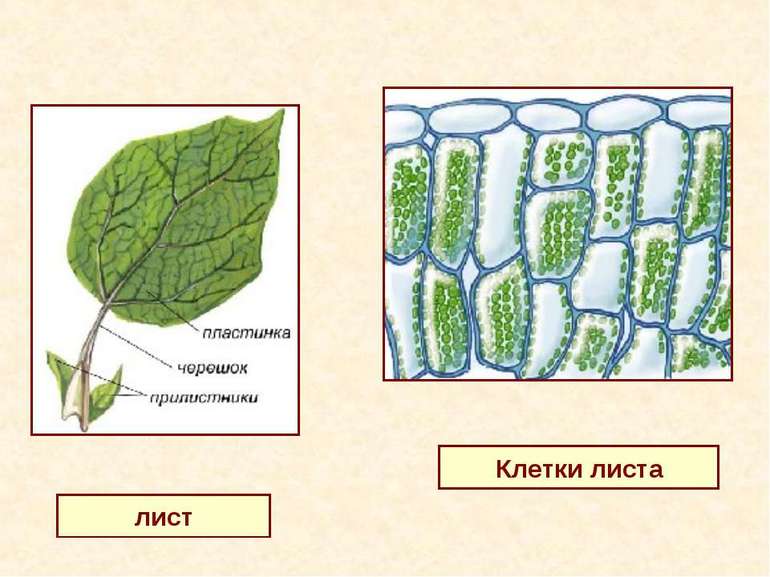

- the cells that make up the leaves, stems and other parts have dense cellulose membranes;
- in cells you can find special chloroplasts containing chlorophyll, which enables the process of photosynthesis;
- thanks to chlorophyll, almost every unit is green;
- attached lifestyle;
- Nutrients and energy stores are stored in the stems or leaves as starch;
- a distinctive feature of each unit is the ability to grow throughout life;
- vital activity and all important processes are regulated with the help of phytohormones, which in their structure somewhat resemble human ones;
- have a dense shell, which usually does not transmit light and consists of cellulose;
- by their nature they are producers, that is, they produce organic substances under the influence of carbon dioxide and solar radiation.
In addition, experts noted the alternation of generations. This trait is not considered unique, but it makes it possible to distinguish representatives of the plant kingdom from fungi and some algae.
The rarest flower is the red middlemist
A flower from the camellia genus, which was introduced to England in the 19th century. Nowadays, it grows only in two gardens in the world, they are in the UK and New Zealand.
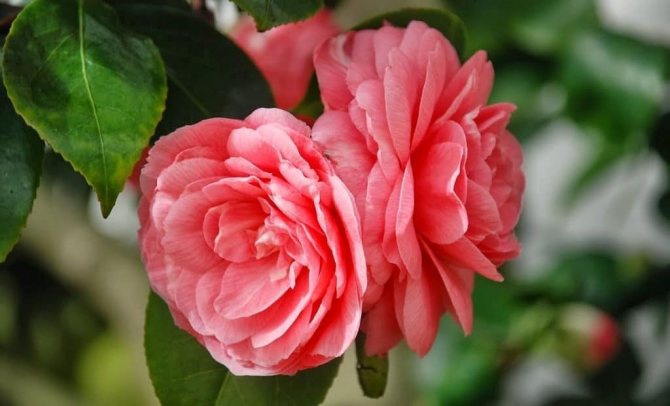

Gardeners tremulously guard the demanding and capricious plant. It does not please with flowering too often.
Pests and diseases
There are several categories of harmful insects and diseases that affect ornamental and agricultural crops. Damage to foliage, seedlings, shoot bark, suction of nutrient juices provoke growth inhibition and sometimes death of plants.
Pasture ryegrass: description of the plant
Crop protection begins with the arrival of spring and ends in the fall. With the help of prevention (effective and reliable reception), they fight pests and ailments.
Attention! When walking in the garden, be sure to look closely at suspicious plants and take urgent measures.
Often, herbaceous plants suffer from:
- aphids and scale insects;
- leafhoppers and earwigs;
- molluscs and nematodes.
Diseases are conventionally divided into:
- parasitic;
- nonparasitic.
Among parasitic ailments, fungal and viral, as well as bacterial are distinguished.
Non-parasitic diseases are caused by improper care and growing conditions. The main symptoms: the color of the leaves changes, the bark cracks, the shoots wither.
Plants most often get sick:
- bulb rot and powdery mildew;
- keel and rust;
- black spot and stalk.
Japanese camellia - the most ideal flower
A decorative flower that every perfectionist will appreciate. This type of camellia blooms in winter with beautiful flowers with neat petals arranged unusually harmoniously.
It is impossible not to admire the Japanese camellia.
Rafflesia Arnoldi - the widest flower
Rafflesia is considered the widest flower in the world. It can grow up to 1 meter wide.
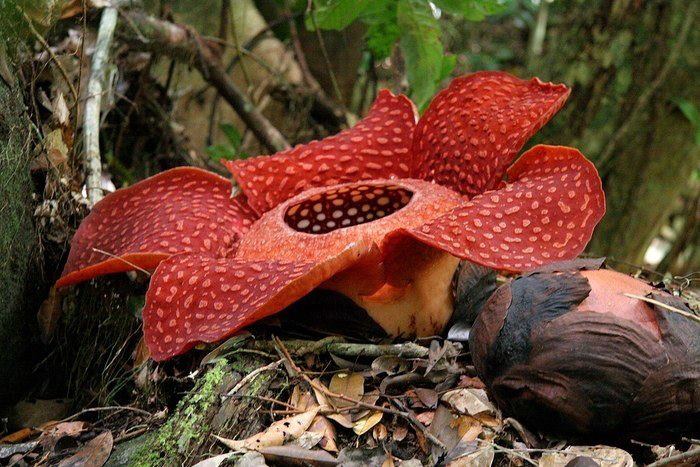

The smell of rafflesia is extremely repulsive, putrid, as it is pollinated by flies. And they are attracted by just such a scent.
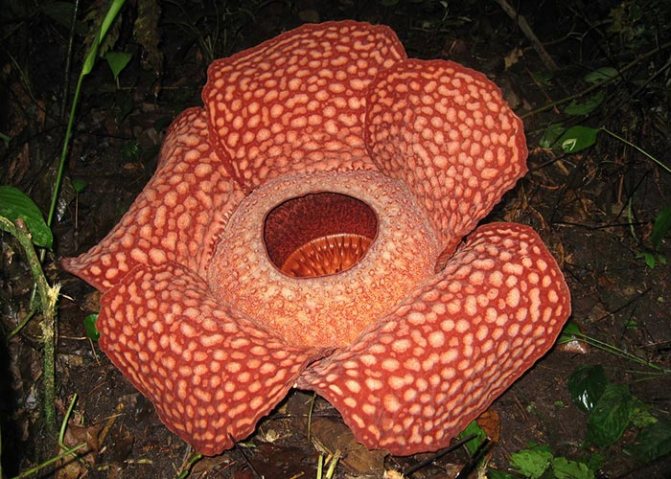

In Indonesia, the flower is a national symbol. Its weight reaches 11 kg.
